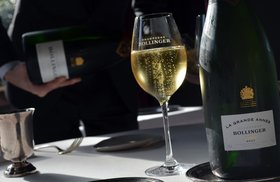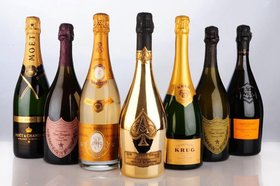Brut Champagne - Winemaking, Best Bottles, Tasting Notes (2025)
Want to discover more about the world of Brut Champagne?
No wedding, romantic dinner, or New Year celebration is complete without a bottle of shimmering bubbles.
But, choosing the perfect bottle of Champagne can be overwhelming with the gazillion choices available today. Champagne houses make your selection process even more complicated with amazing cuvees in attractive packaging adorning words like Brut, Doux, Extra-Dry, and Semi-Dec.
So, what does the term Brut mean? How is Brut Champagne different from other Champagne styles? Which are the best bottles you should look for in 2024?
In this article, we delve into the sparkling world of Brut Champagne. We look at what Brut Champagne is, its taste and characteristics, and how to serve it. We’ll also take a quick look into the world of Champagne itself and end it off with the Best Brut Champagnes For You To Experience.
And, If You Want To Add An Investment-Worthy Brut Champagne To Your Collection - we have a hassle-free way to do that as well.
Further reading
- Discover the finer details of Fine Wine Investment in this comprehensive article.
- Want to know more about the best Super Tuscan wines? Start your journey by discovering the Marvellous Masseto and the Wonderful Ornellaia.
What Is Brut Champagne?
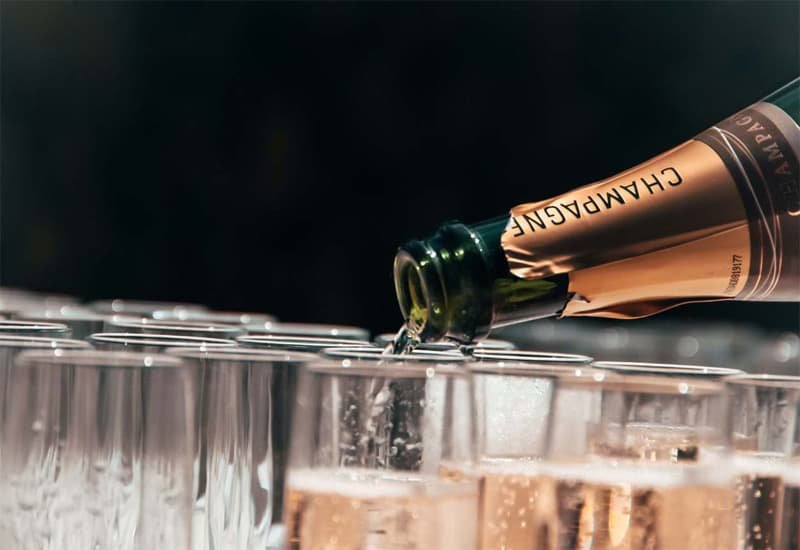
Brut Champagne is a style of dry sparkling wine produced in the Champagne region of France.
Brut means “dry, raw, or unrefined” in French and is the least sweet classification of Champagne. For a Champagne to be considered Brut, it has to have less than 12 grams of sugar per litre. It has a moderately high alcohol level at 12% ABV.
It is typically made from Chardonnay, Pinot Meunier, and Pinot Noir, but it can also contain small amounts of Pinot Blanc, Petit Meslier, Pinot Gris, and Arbane.
Brut Champagne can be made in both the white and rose style and can be vintage or non-vintage. The most common Champagne styles are Blanc de Blancs (white wine from white grape varietals) and Blanc de Noirs (white wine from red wine grape varietals.)
Let’s take a closer look at the tastes and characteristics of this popular Champagne style.
Taste And Characteristics Of Brut Champagne
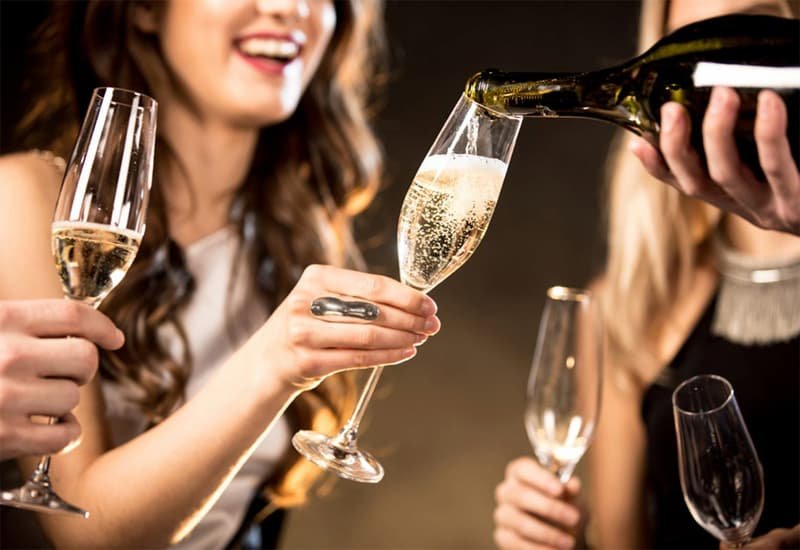
Brut Champagne is a light-bodied wine that is pale in color and has low tannin levels. The high acidity in this Champagne plays well with the bubbles.
You will experience aromas of nuts, brioche, and flowers backed by fruit-forward notes of apple and pear. Some Brut Champagnes also have a chalky and mineral aroma.
Brut Champagne is not as fruity as other sparkling wines like Prosecco, for instance. But, it can still have some lovely citrus, stone fruit, and quince flavors. Some have a light savory flavor and a mineral finish.
This well-balanced and silky Champagne makes the perfect bottle of bubbles for any celebration.
Champagne Sweetness Levels
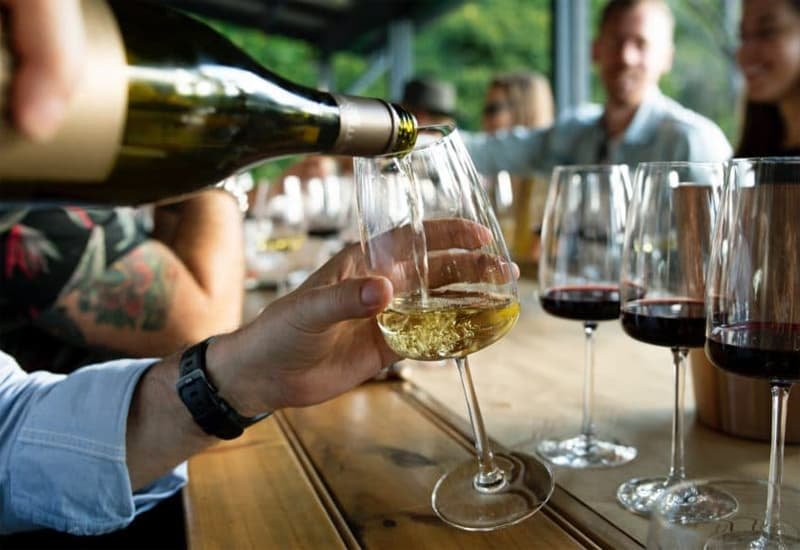
Now let’s see what gives Champagne its sweet taste and how Brut Champagne is different from the others.
Jump to any of these sections if you want to take a quick look:
- How Champagne Gets Its Sweetness
- Levels of Sweetness in Champagne (or any Sparkling Wine)
- Sugar Levels in Champagne Compared to Other Drinks
- Extra Dry Champagne Vs. Brut Champagne
How Champagne Gets Its Sweetness
Champagne gets its sweetness when sugar is added to the dry wine during the post-secondary fermentation stage.
Champagnes and sparkling wines are made using the Methode Champenoise (traditional method), which includes the following steps:
- The grapes are gently pressed to extract the juice. The winemaker adds the yeast and sugar, and alcohol fermentation takes place.
- For non vintage Champagnes, the wines are then blended (assemblage), and secondary fermentation (tirage) occurs. Bottles are stored horizontally for around eight weeks to get the carbon dioxide byproduct and effervescence.
- After secondary fermentation, the cuvee is aged on its lees for 1-3 years to enhance the flavor.
- Bottles are then stored at a 45-degree angle and turned upside down to settle the lees in the neck of the bottle (remuage.)
- The Champagne bottle neck is frozen, and the winemaker removes the cap with the lees - this process is called disgorgement.
- The bottle is then topped up with sweetened wine and sugar (dosage), determining the sweetness levels. This dosage liquor typically contains around 500-700 grams of sugar per litre, and the quantity varies according to the style of Champagne.
- Champagne is then aged for 12-36 months before release.
Levels of Sweetness in Champagne (or any Sparkling Wine)
There are seven different styles of Champagne, based on the sugar level, ranging from the extra dry to the super sweet:
- Brut Nature (aka Brut Zero): Contains 0-3 grams of Residual Sugar (RS) per litre. Brut Nature / Brut Zero is the driest of sparkling wines with no added sugar or dosage, also known as Ultra Brut or Extra Brut.
- Brut: 0-12 grams RS per litre. This cuvee is dry with little to no sweetness on the palate. This is the most common style of Brut Champagne found in your local shop.
- Extra Dry: 12-20 grams RS per litre. Extra Dry or Extra Sec is an off-dry Champagne and only tastes slightly sweet.
- Dry (aka Secco or Sec): 20-32 grams RS per litre. “Sec” directly translates to “dry” but has a noticeable sweetness on the palate.
- Demi-Sec: 32-50 grams RS per litre. Demi-Sec is a sweet Champagne for wine lovers with a sweet tooth, often served as a dessert wine.
- Doux: Doux has 50+ grams RS per litre. This sweet Champagne style is the sweetest of all Champagnes and works perfect as a dessert wine.
Sugar Levels in Champagne Compared to Other Drinks
It doesn’t take a lot of sugar to make Champagne sweet. If you compare how much residual sugar is in a 150 ml serving of Champagne compared to other popular drinks, the sugar level is pretty low.
There is 14-15g of sugar in a Gin and Tonic and 17-18g in a typical coffee shop latte - while there is only 0.5g of residual sugar in a Brut Nature sparkling wine.
Extra Dry Champagne Vs. Brut Champagne
Logically, “extra dry” Champagne would taste drier - but this is not the case.
Extra dry Champagne is slightly sweeter and has around 12-20 grams of sugar per litre - and it contains more added sugar than Brut Champagne.
Food Pairings And How To Serve Brut Champagne
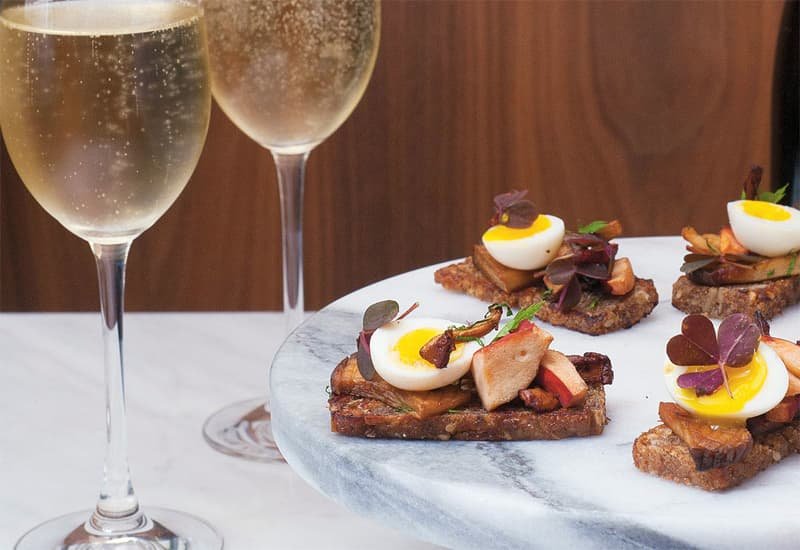
Brut Champagne pairs perfectly with anything from traditional caviar to seafood dishes drenched in butter thanks to the high acidity. It is also great with fried potatoes, swiss and ham quiche, smoked salmon, and Rockefeller oysters.
A Brut sparkling wine is also perfect for Champagne cocktails. Since the other ingredients are generally sweeter, they would play nicely with the dryness of the Champagne.
But wait, which wine glass should you use to serve dry Champagne or Champagne Cocktails?
Contrary to popular belief, Champagne flutes are not the ideal glasses to serve Brut Champagne. Instead, use a white wine glass or a coupe glass for tasting and enjoying this sparkling wine.
But how did Champagne manage to become the elite choice for a sparkling aperitif?
Let’s take a look.
A Quick Primer on Champagne
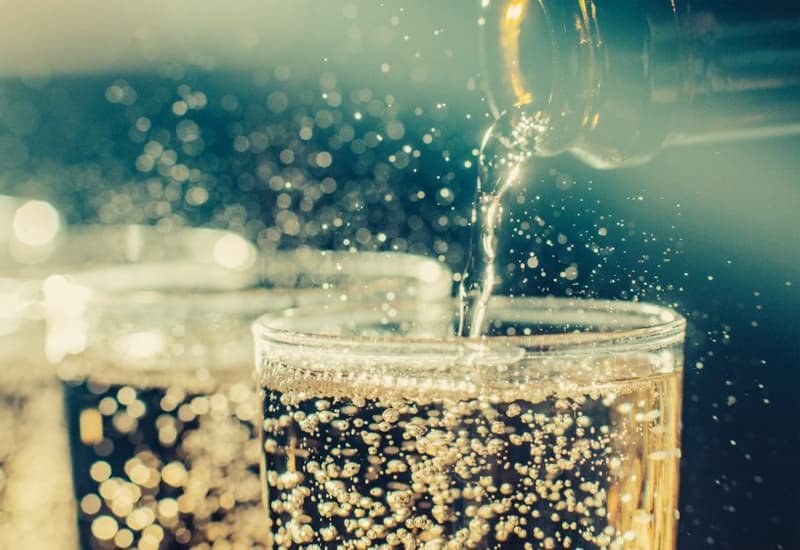
All Champagnes are sparkling wines, but not all sparkling wines are Champagne. Only sparkling wines produced in the Champagne region of France are considered authentic Champagnes.
The Origins Of Champagne
Champagne was created by accident as a by-product of the Champagne region’s climate. The early frost would stop the fermentation during the bottle-aging process, and when temperatures warmed up - the fermentation would start again.
This produced an excess of carbon dioxide and resulted in the bubbles that we enjoy today. These fizzy bottles of wine were prone to bursting, which gave Champagne the nickname “the devil’s wine.”
Benedictine monk Dom Perignon tried to remove the fizz and instead turned it into a popular wine style in the 17th century. The Origins of Brut Champagne
The Champagne house Perrier-Jouet was the pioneer of the Brut style in the mid-19th century.
Their 1846 vintage is responsible for starting a new era for Champagne when Perrier-Jouet decided not to add any sugar to the wines destined for the English market. Today, these Champagnes would be under the Brut Nature classification.
During the 20th and 21st centuries, Brut Champagne became the popular choice, and today it outsells the sweeter Champagne styles.
How To Read A Sparkling Wine And Champagne Label

Classification systems for wines, especially when it comes to a Champagne label, can confuse any wine enthusiast. Here’s a simple guide to decipher the labels of sparkling wines according to the region.
- In Italy, Sparkling wines are known as Spumante (which means ‘foaming.’) Depending on the region or grape varietal used - they can also be called Franciacorta or Prosecco.
- In Spain, Cava is made in the same way as Champagne, and they produce some of the best sparkling cuvees today.
- Sekt is the German name for sparkling wine.
- Non-Vintage (NV) means that the sparkling wine is a blend of more than one reserve wine from different years.
Ready to discover some amazing Brut Champagnes for you to experience?
8 Awesome Brut Champagnes For You To Experience
Here is our list of the top eight Champagnes that will give you the whole experience of this lovely cuvee.
1. NV Moet and Chandon Esprit du Siecle Brut

This gorgeous Brut Sparkling Wine has a bouquet of praline, coffee, Viennese pastry backed by citrus and kumquat notes. This rich and silky wine expresses plums, nectarines, candied citrus fruits, dates, dried figs on the palate.
Price of a NV Moet & Chandon Esprit du Siecle Brut, Champagne, France: $6949
2. 1959 Dom Perignon Oenotheque Brut Mellesime
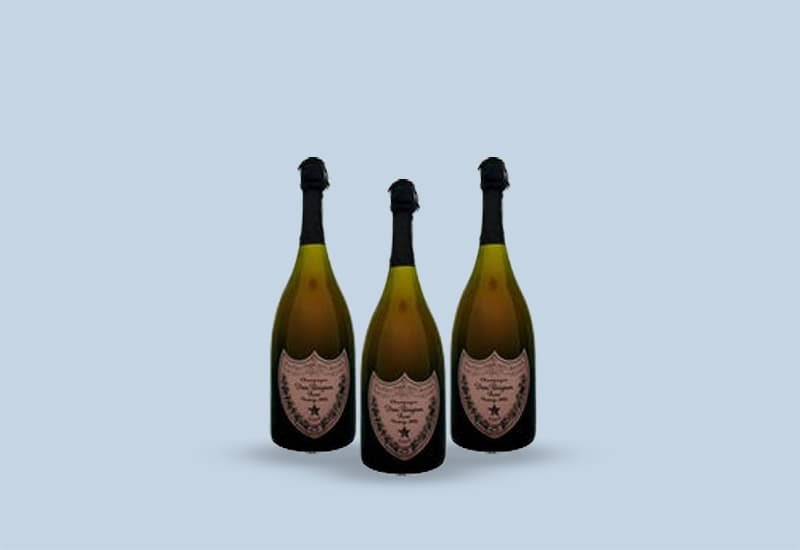
The aroma of this complex cuvee reveals honey, oriental tobacco, licorice, coffee, chocolate, and figs. It’s a well-rounded, rich wine that will have you tasting great fruit flavors on the palate.
Price of a 1959 Dom Perignon Oenotheque Brut Millesime, Champagne, France: $4686
3. 1975 Dom Perignon P3 Plenitude Brut

The 1975 Dom Perignon has a seductive nose with mature and rich aromas. Tasting this wine reveals a harmonious, vivid, and a medium body backed by silky tannins. It has a sophisticated finish that is extensive and flavorful.
Price of a 1975 Dom Perignon P3 Plenitude Brut, Champagne, France: $4999
4. 2002 Louis Roederer Crystal 'Gold Medalion' Orfevres Limited Edition Brut Mellesime
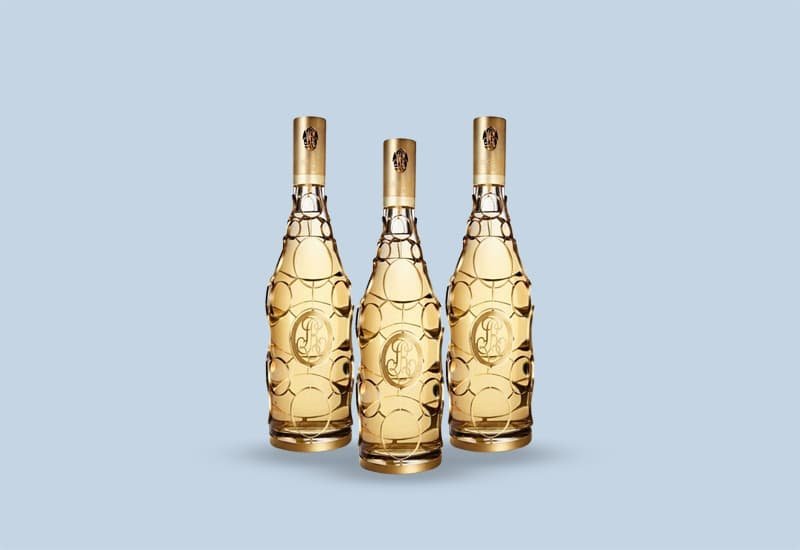
It has a beautiful mousse that reveals aromas of hazelnuts, cocoa, honey, and candied citrus fruit. The wine from this Champagne producer has a savory explosion of ripe pear on the palate with red fruit, caramel, pastry, and white chocolate.
Price of a 2002 Louis Roederer Cristal 'Gold Medalion' Orfevres Limited Edition Brut Millesime, Champagne, France: $4932
5. 1995 Boerl & Kroff Brut Mellesime

This cuvee from Boerl & Kroff has a beautiful effervescence with lots of fine bubbles. It has an exciting aroma of gingerbread, lime, and beeswax. The concentrated palate has a beautiful intensity and a finish with candied lemon zest notes.
Price of a 1995 Boerl & Kroff Brut Millesime, Champagne, France: $3651
6. 1998 Bollinger R.D Extra Brut 'Spectre' James Bond 2007 Edition

This Champagne from the Bollinger house is a blend of 32% Chardonnay and 68% Pinot Noir. It has lovely notes of citrus fruits, pear, white flowers, vanilla, hazelnuts, and brioche. The palate reveals mature notes of candied fruit, plum, honey, quince that leads you to a finish with bitter orange notes.
Price of a 1988 Bollinger R.D. Extra Brut 'Spectre' James Bond 007 Edition, Champagne, France: $2985
7. 1964 Krug Private Cuvee

This magnificent vintage is more buttery compared to other vintages from the Krug Champagne house. It has aromas of young fruit, ginger, and spice. On the palate, it has nuances of sandalwood, cloves, eucalyptus, and orange blossom.
Price of a 1964 Krug Private Cuvee, Champagne, France: $2206
8. 1955 Dom Perignomn Reserve de L'Abbaye
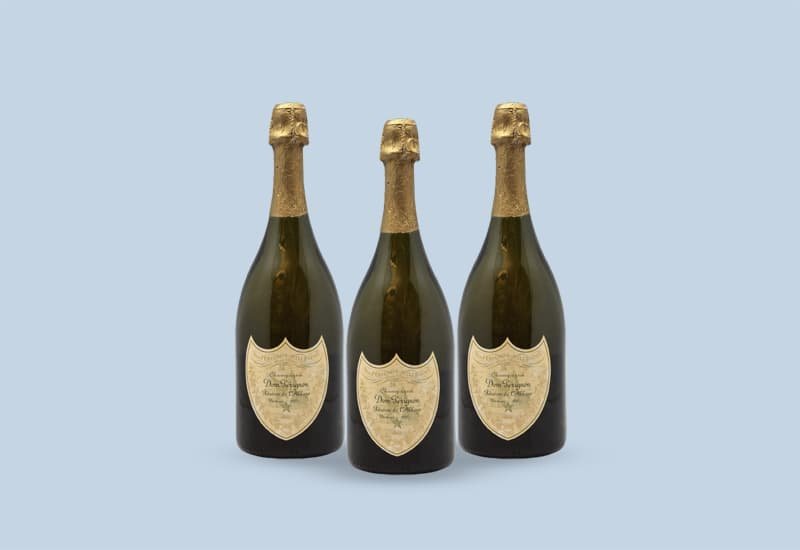
This gorgeous Brut Reserve from Dom Perignon has aromas of dried herbs, lemon, and candied grapefruit. The palate continually reveals spicy cinnamon notes. Its finesse carries on through every sip that leads you to a lingering finish full of fresh fruit and balanced acidity.
Price of a 1995 Dom Perignon Reserve de L'Abbaye, Champagne, France: $2141
Why You Should Invest In Brut Champagne
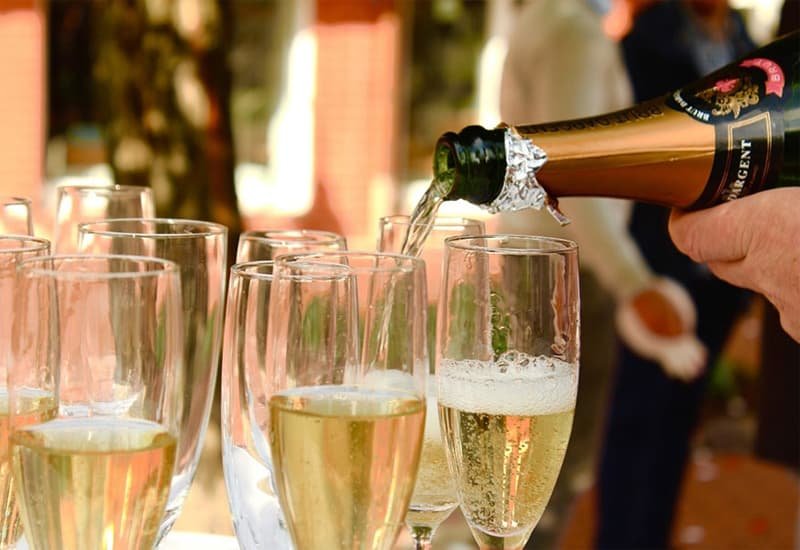
Champagne is not only for those who enjoy a glass of bubbly at milestone celebrations but for those who want to have an impressive age-worthy wine collection.
While a non vintage Champagne (those made with reserve wine) can only last for 4-5 years, a vintage Champagne can live for 10 or more years in a cellar.
There are several other compelling reasons for investing in Champagne, including Brut Champagne.
The Liv-ex Champagne 50 index grew by 80% between 2010 and 2020. Compare this to the 48% and 29% growth of the Liv-ex 1000 and the Bordeaux 500 index respectively.
At auctions, Brut Champagne often outperforms expectations. At an auction in 2005, a Methuselah of Louis Roederer, Cristal Brut 1990, Millenium 2000 sold for an astonishing $17,625.
As for price appreciation, Brut Champagnes continue to perform favorably:
- The 1983 vintage of Dom Perignon P3 Plenitude Brut saw a 75% increase in 6 months, going from $1459 to $2546 per bottle (Sep 2020 - Feb 2021.)
- The 1952 Krug Vintage Brut amazed wine enthusiasts with an impressive 58% increase in just one year, going from $2852 - $4499 (Jan 2020 - Jan 2021.)
Which Champagne producer and which Champagne should you look out for when you invest? Should you start with bottles from Veuve Clicquot, Taittinger, Piper Heidsieck, or Billecart Salmon?
There are two ways you can have an impressive wine collection. Either become an Advanced Sommelier yourself, or you can work with a world-class online investment company like Vinovest.
Buy, Store, And Sell Champagnes And Other Fine Wines With Vinovest
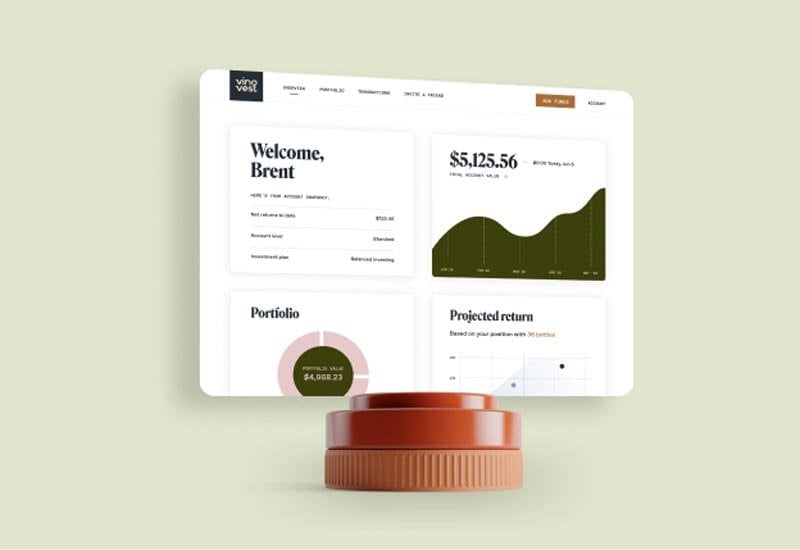
Vinovest is an online wine investment company that helps you buy, store, and sell sought-after collectible wines for your collection.
They will help you choose wines according to your investment style by crunching mind-boggling wine-industry data and will help you build an enviable wine portfolio.
The best part?
All of this takes place online, letting you enjoy the world of fine wine investment from anywhere.
How It Works
- Sign up on the Vinovest website.
- Answer a quick questionnaire to discover your investment style.
- Top up your Vinovest account with a $1,000 minimum.
- Browse and select wines according to your style and enjoy watching your portfolio grow in real-time.
Benefits Of Working With Vinovest
Want to find out more about the fantastic benefits of working with Vinovest?
A. Easy Buying and Selling using AI-driven technology
Vinovest’s online AI-driven platform is easy to use and gives you all the opportunities to buy sought-after wines from all over the world. It also matches you to the perfect buyer if you choose to sell a bottle.
B. Best Prices
Vinovest sources the wines directly from global wineries and trusted merchants - letting you get the best price for your favorite wines.
C. Optimal wine storage
When you work with Vinovest, you can take advantage of their fantastic storage facilities that store wine at optimal conditions for aging gracefully.
D. Low overall costs
Vinovest charges a low annual fee of 2.5% for all these fantastic benefits and more. When your portfolio increases to above $50,000 - this annual fee decreases to 1.9%.
E. Deep network
Keep up to date with what is happening with your favorite wines and wineries with Vinovest’s deep network. You will also get news of upcoming wineries from your favorite wine regions.
F. Easy delivery
Want to open a bottle of your favorite Champagne? Vinovest will take care of the finer details and have them delivered to your doorstep.
G. Comprehensive insurance and security
Vinovest insures all the wine under an FDIC equivalent, insuring them against breakage, loss, and theft.
Add An Elegant Sparkle To Your Collection

Brut Champagnes are the world’s favorite bubbly for celebrations and the best aperitif to start an evening with family and friends. This light-bodied cuvee is sure to please the palate of every wine enthusiast, no matter their taste in wines.
Vintage Brut Champagnes are also a great way to add a bit of elegant sparkle to your investment wine collection.
Sign up with Vinovest today and discover some of the best Champagnes the region has to offer and more.

